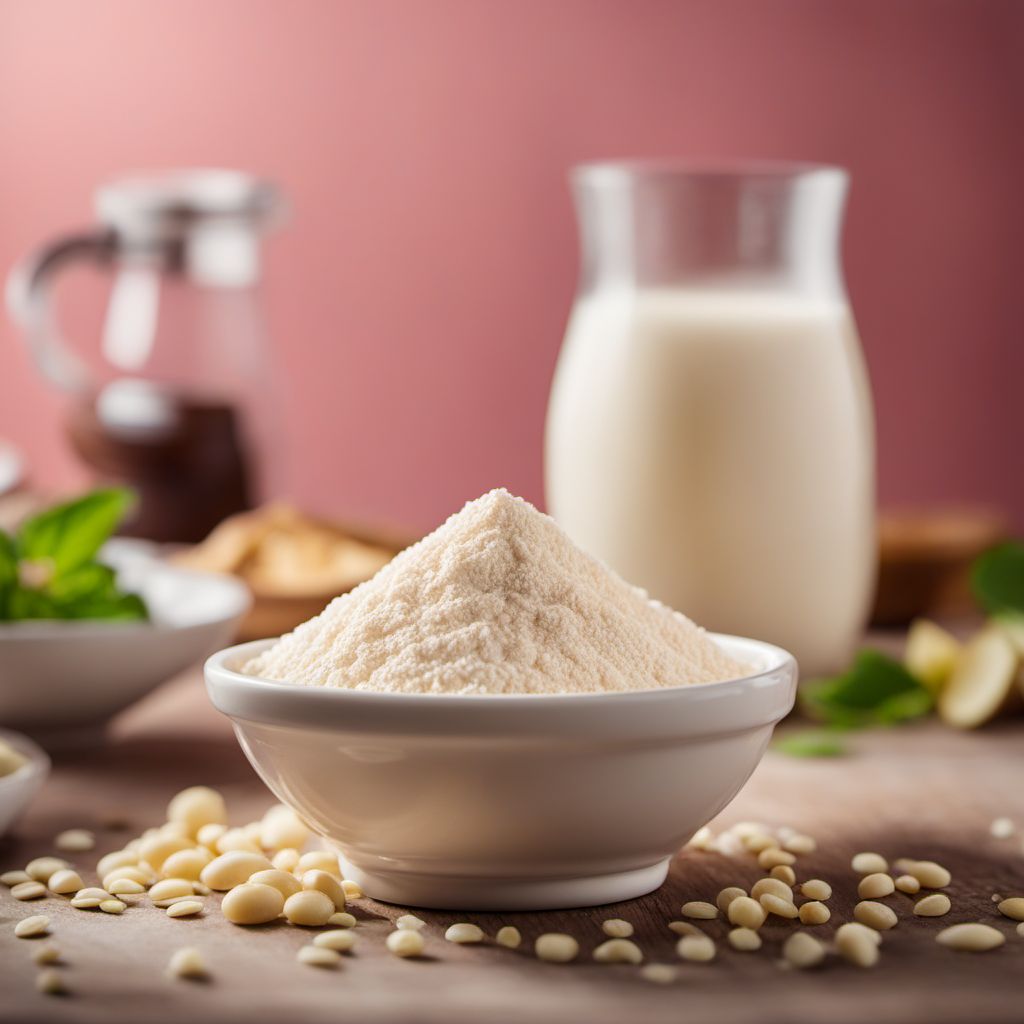
Ingredient
Whey, sweet
The Liquid Gold of Dairy
Sweet whey is a translucent, pale yellow liquid with a slightly sweet taste and a thin consistency. It is rich in protein, lactose, and minerals, making it a valuable ingredient in various food products. Its smooth texture and mild flavor make it an excellent addition to smoothies, protein shakes, and desserts. Additionally, it acts as a tenderizer in baking, contributing to moist and soft baked goods.
Origins and history
Whey has been used for centuries, with its origins dating back to ancient Greece and Rome. It was considered a valuable byproduct of cheese-making and was often used for medicinal purposes. In modern times, whey has gained popularity as a nutritional supplement due to its high protein content and potential health benefits. It is now widely produced in countries with a strong dairy industry, such as the United States, Germany, and New Zealand.
Nutritional information
Sweet whey is a good source of protein, containing essential amino acids necessary for muscle growth and repair. It is also rich in minerals like calcium, phosphorus, and potassium. Additionally, it provides a moderate amount of calories, making it a suitable option for individuals looking to maintain a balanced diet.
Allergens
Sweet whey may contain lactose, making it unsuitable for individuals with lactose intolerance or milk allergies. It is important to check the label for any potential allergens or consult with a healthcare professional if unsure.
How to select
When selecting sweet whey, opt for reputable brands or sources that prioritize quality and safety. Look for products that are made from high-quality milk and produced using reliable manufacturing processes. Additionally, check the expiration date to ensure freshness and avoid any products with signs of spoilage or off-flavors.
Storage recommendations
To maintain the freshness and quality of sweet whey, it is recommended to store it in a tightly sealed container in the refrigerator. This will help prevent the growth of bacteria and maintain its flavor and nutritional properties. It is important to consume sweet whey within a few days of opening to ensure optimal taste and quality.
How to produce
Producing sweet whey requires specialized equipment and knowledge of cheese-making. It is best left to professional dairy producers who have the necessary infrastructure and expertise to extract whey from cheese curds. However, individuals can make their own whey at home by straining yogurt or milk through a cheesecloth or fine-mesh sieve.
Preparation tips
Sweet whey can be used in a variety of ways in the kitchen. It can be added to smoothies or protein shakes for an extra boost of protein. In baking, it acts as a tenderizer, adding moisture and tenderness to cakes, muffins, and bread. Additionally, it can be used as a marinade for meats or as a base for soups and sauces, enhancing their flavor and texture.
Culinary uses
Sweet whey is commonly used in protein powders, baked goods, and as a natural flavor enhancer in various food products. It is often incorporated into smoothies, protein bars, cookies, and bread. Additionally, it is used in the production of certain types of cheese and as a tenderizer in baking.
Availability
Sweet whey is widely available in countries with a strong dairy industry, such as the United States, Germany, and New Zealand. It can be found in grocery stores, supermarkets, and specialty food stores. Additionally, it is available for purchase online, providing accessibility to individuals worldwide.
